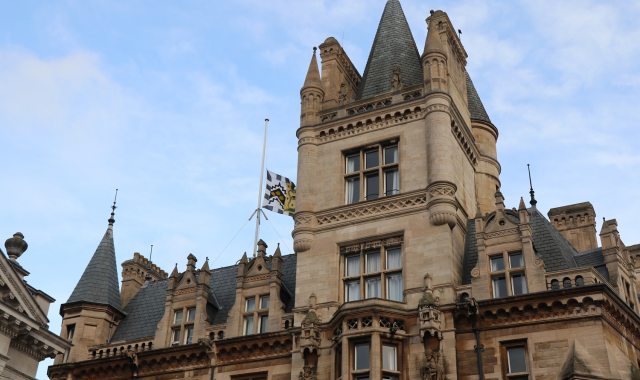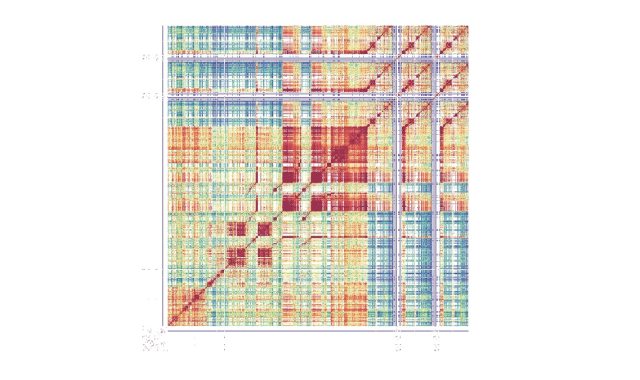Cell nucleus shapes maternally inherited mitochondrial DNA
- 28 May 2019
- 3 minutes
A study, published in Science, led by Gonville & Caius Fellow and Joint Director of Studies in Clinical Medicine Professor Patrick Chinnery has found that matching mitochondrial DNA to nuclear DNA could be important when selecting potential donors for the recently-approved mitochondrial donation treatment, in order to prevent potential health problems later in life.
Almost all of the DNA that makes up the human genome is contained within our cells’ nuclei – called ‘nuclear DNA’. This DNA provides the code for the characteristics that make us individual as well as for the proteins that do most of the work in our bodies – everything from repairing tissue to digestion. Our cells also contain mitochondria, the ‘batteries’ that provide energy for our cells to function. Each of these are coded for by a tiny amount of ‘mitochondrial DNA’, which is passed down exclusively from mother to child.
Until now, scientists had thought that mitochondria could be replaced with those from a donor with no consequences. However, in the first major population study to use data from the UK-wide 100,000 Genomes Project and its National Institute for Health Research (NIHR)-funded pilot project, the Cambridge researchers have discovered that “swapping mitochondria might not be as straightforward as just changing the batteries in a device”, according to Professor Chinnery.
Researchers studied over 1,500 mother-child pairs and found that just under a half (45%) of individuals within these pairs harboured mutations affecting at least 1% of their mitochondrial DNA. Mutations in certain parts of mitochondrial DNA were more likely to be transmitted, such as those in the so-called D-loop region, which controls how mitochondrial DNA copies itself. Conversely, mutations in other parts of mitochondrial DNA were more likely to be suppressed, such as the code for how mitochondria produce their own proteins. This finding, combined with the knowledge that children inherit their DNA exclusively from their mother, indicates “there is some kind of selection taking place when mitochondrial DNA is transmitted down a generation, allowing some mutations to be passed on and others to be blocked,” said first author Dr Wei Wei.
Furthermore, results from the study suggest that our nuclear DNA shapes our mitochondrial DNA. Professor Chinnery said: “This discovery shows us that there’s a subtle relationship between the mitochondria and nuclei in our cells that we’re only just starting to understand.”
The evidence mirrors that from previous studies in fruit flies and mice, where a mismatch between their mitochondrial and nuclear DNA affected how long the organisms lived for and caused cardiovascular and metabolic complications later in life (diseases in humans that might include heart disease and type 2 diabetes, for example).
The findings could have implications for mitochondrial donation treatment, according to Professor Chinnery, who previously worked with the team at Newcastle University pioneering this treatment. The technique, which is now licenced for use in the UK, prevents the transmission from mother to child of potentially devastating mitochondrial diseases. It involves substituting a mother’s nuclear DNA into a donor egg while retaining the donor’s mitochondria.
“Mitochondrial replacement therapy is an important new treatment to enable mothers to have children free from terrible mitochondrial diseases, which arise because of severe mutations in mitochondrial DNA,” said Professor Chinnery.
“Our work suggests we’ll need to look carefully at this new treatment to make sure it does not cause unexpected health problems further down the line. It may mean that doctors will need to match the nuclear genome and mitochondrial genome of mitochondrial donors, similar to an organ transplant.”
The team has now begun work looking at those people whose mitochondrial DNA does not match their nuclear DNA – occurring when at some point in the maternal lineage, there was a mother from a different ethnic background – to see if this mismatch increases the likelihood that they will be affected by health problems later in life.
Image: Three mitochondria surrounded by cytoplasm. Credit: Dr David Furness. CC BY-NC


